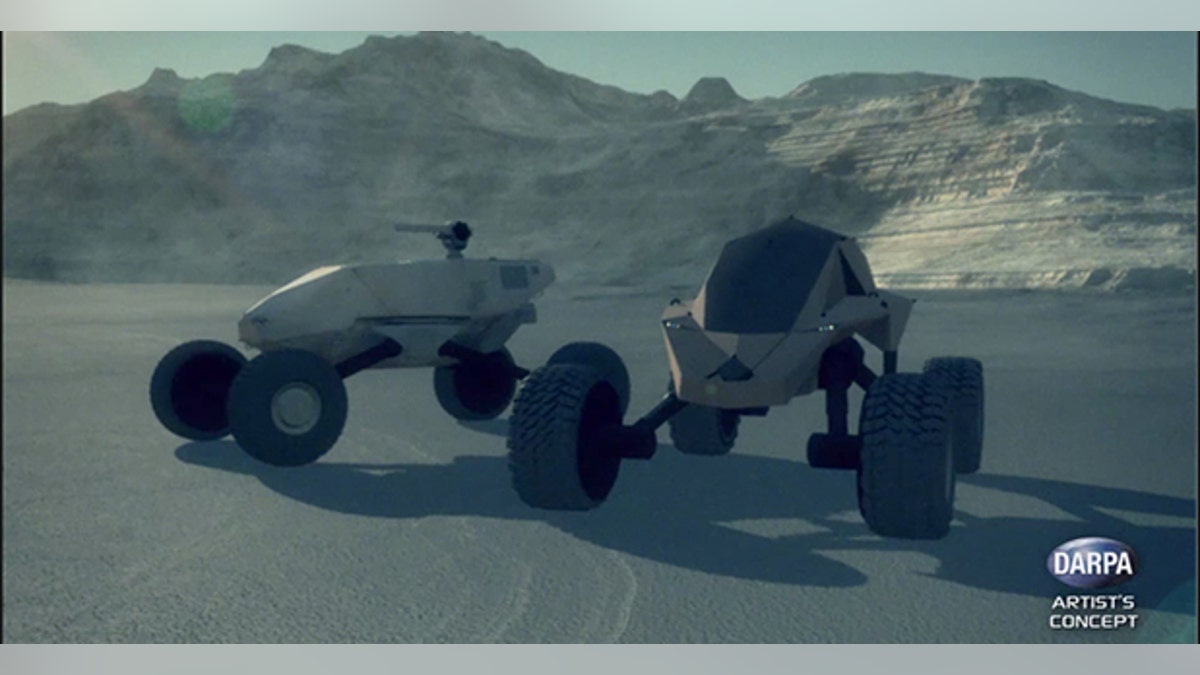
(DARPA)
A new futuristic vehicle concept has something to appeal to all sorts of heroes in this summer’s blockbusters, whether it is Jason Bourne, the Suicide Squad or Batman.
Dubbed the GXV-T for now-- which stands for Ground X-Vehicle Technology-- this fighting vehicle will be full of groundbreaking DARPA tech for the US military, tech that will make it more agile, fast, safe and affordable than current options.
And this new vehicle worthy of Jason Bourne’s most ambitious missions could be in the hands of the US Army and Marine Corps someday soon.
Aside from producing a very cool ride— why it is important?
Weapons continue to evolve and become more and more effective at piercing through the armor that protects military ground vehicles.
The current solution tends to be to add more armor. This does provide more protection – but also tends to translate into more weight and less speed, agility and maneuverability for warfighters.
ATV that flies to join the fight
DARPA has created a video that showcase some of the features the GXV-T could bring to the fight. The vehicles are seen flying through the air, having hitched a ride with a helicopter. Designed to be lightweight and readily transportable, the vehicles are then dropped and inserted into the battlespace.
Once on the ground, the GXV-T will dominate off road. This puppy won’t just be able to go off-road— it will be able to effortlessly handle 95% of the world’s terrain.
DARPA has challenged companies to devise advanced suspension and novel track and wheel configurations to make this possible.
It will also bring extreme speed to the fight. Breakthroughs are expected to ensure that this speed is truly extreme both on and off the road – and better than what is possible with current vehicles.
Armor worthy of the batmobile
More armor is old school. DARPA has challenged companies to find a solution that does not involve additional armor, and thus more weight. Instead companies must innovate and figure out how to completely rethink conventional approaches to armoring.
One solution could be a sort of shape-shifting armor that automatically repositions itself to fortify against, and defeat, an incoming threat.
“Crew augmentation” for the Suicide Squad
Let the Suicide Squad focus on misbehaving while the vehicle takes care of the rest. When their eyes are not on the road, this GXV-T will automatically avoid obstacles.
DARPA aims to provide the US military with lots of breakthroughs with advanced tech on the “crew augmentation” front.
One idea is to take modern commercial airplane cockpits and give the best of their self-automation style capabilities to a ground vehicle. So while a squad focuses on the mission or returning fire against a threat, the vehicle could handle the driving for them.
It will also provide futuristic data gathering and display everything they need to know about enemies, automatically avoiding detection by them while also finding and providing alternative routes to avoid engaging.
Stealth for Bourne
The character Jason Bourne is frequently flexing his skills to avoid detection and stay stealthy.
With the proliferation of advanced tech around the world, staying stealthy is becoming increasingly difficult. But DARPA aims to ensure that teams driving the GXV-T can evade detection with state of the art “signature management” tech. Signature management tech is basically a fancy way of saying don’t get caught, and see threats and targets without being seen yourself.
This vehicle will stay stealthy by reducing signatures that would traditionally be used to detect it, and reveal those attempting to be stealthy, including spotting them with infrared, sound, sight, and electromagnetics.
Related:
But the vehicle won’t just be stealthy, it will be smart stealthy. It will be able to spot enemy forces and threats before it can be seen itself – and notify the human team onboard.
In the video, for example, DARPA shows the vehicle alerting the team that it has made visual contact with opposing forces with futuristic displays that provide data and instructions to detour to a secondary valley route, successfully avoided engagement with the enemy.
So the vehicle itself will be able to identify threats and immediately “think” of ways to avoid detection. It could then advise the team accordingly. And it may even be able to just avoid detection automatically, like on an autopilot.
To have these stealthy smarts, advances in tech will need to be made like high-resolution sensors that can help build 360-degree high-resolution images of the world outside the vehicle and the battlespace.
Eight companies, seven hailing from around the United States and one UK-based, are in contention to be selected to develop this futuristic ride. The teams that have been chosen are: Carnegie Mellon University, Honeywell International Inc., Leidos, Pratt & Miller, Raytheon BBN, Southwest Research Institute, SRI International and QinetiQ Inc. DARPA has awarded a contract to each.




















